Nikon AF-S Nikkor 28mm f/1.8G Review

Introduction
Announced earlier this year, the AF-S Nikkor 28mm f/1.8G is a fast wide-angle lens for Nikon's full-frame DSLRs. Designed for professional photojournalists and landscapists, the lens features a Nano Crystal coating to reduce reflections and a Silent Wave Motor (SWM) for quiet focusing. Boasting two aspherical lens elements and a weather-sealed mount, the Nikon AF-S 28mm f/1.8G ED is available for £619.99 / €739.00 / $699.95 in the UK, Europe and the USA, respectively.
Ease of Use
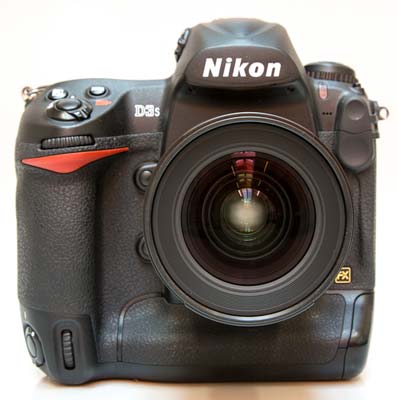 The Nikon 28mm f1.8G lens
The Nikon 28mm f1.8G lens
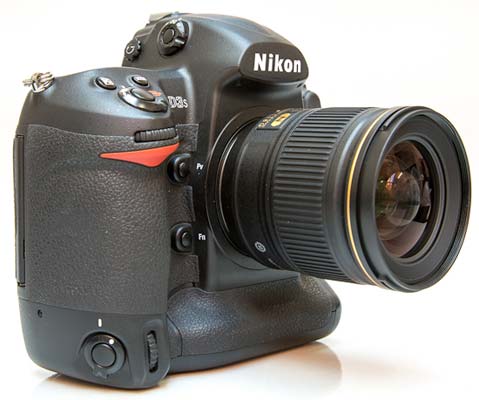 The Nikon 28mm f1.8G lens, isometric view
The Nikon 28mm f1.8G lens, isometric view
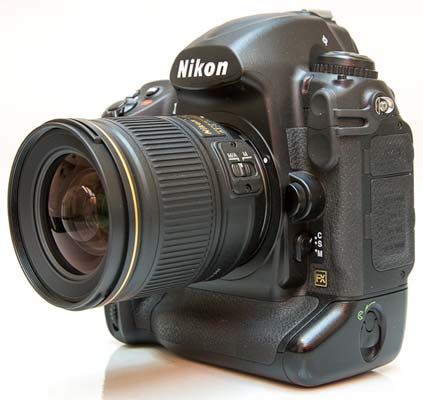 The Nikon 28mm f1.8G lens, isometric view
The Nikon 28mm f1.8G lens, isometric view
For a short prime, the Nikon AF-S Nikkor 28mm f/1.8G is a rather big lens., although not too heavy at 330g. While you can use it on a smaller DX body for a 42mm equivalent angle of view, it won't balance well - as demonstrated by the images above, it's a much better match for a professional-grade, full-frame like the D3S.
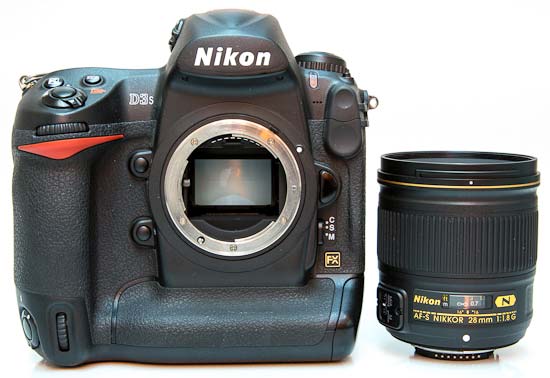 The Nikon 28mm f1.8G lens alongside the D3S
The Nikon 28mm f1.8G lens alongside the D3S
As you would expect from a lens that costs this much, build quality is very good. The Nikon 28mm f1.8G feels solid in your hand, even if the outer barrel and the filter thread appear to be made from plastic. The focusing ring is just as wide as it needs to be, and has a ridged, rubberised grip band. As this is a G series lens, it has no aperture ring - no big deal unless you wanted to use it on a very old film body.
 Front of the Nikon 28mm f1.8G lens
Front of the Nikon 28mm f1.8G lens
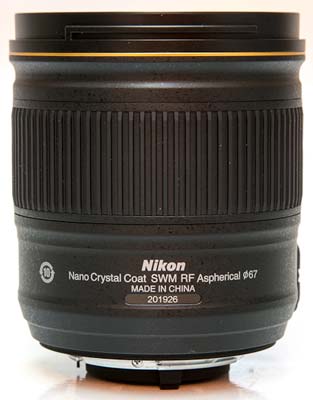 Rear of the Nikon 28mm f1.8G lens
Rear of the Nikon 28mm f1.8G lens
The lens features a distance scale complete with a DOF scale, although the latter is of limited use, having markings for f/16 only. Left of the focus index is a small dot that appears to be an infrared focus index.
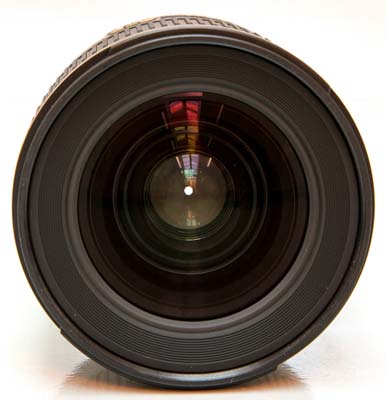 Front of the Nikon 28mm f1.8G lens
Front of the Nikon 28mm f1.8G lens
 Front of the Nikon 28mm f1.8G lens. Note the rubber seal around the lens mount.
Front of the Nikon 28mm f1.8G lens. Note the rubber seal around the lens mount.
Since the Nikkor 28mm f/1.8 does not have Vibration Reduction, the only control on the lens barrel is a focus mode switch with the usual M/A and M settings.
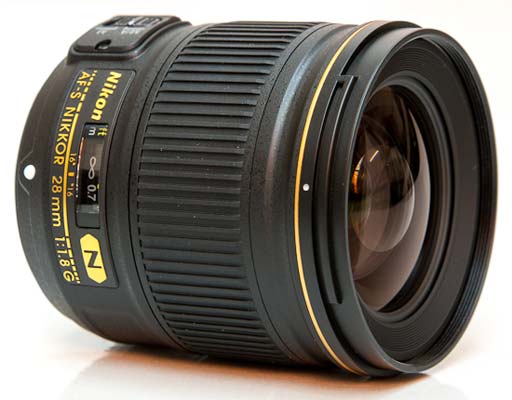 Front of the Nikon 28mm f1.8G lens
Front of the Nikon 28mm f1.8G lens
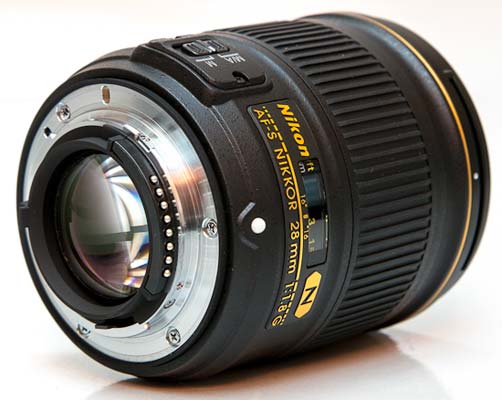 Rear of the Nikon 28mm f1.8G lens
Rear of the Nikon 28mm f1.8G lens
The Nikon AF-S 28mm f/1.8G is sealed against dust and moisture, so it's a great companion for similarly sealed bodies even when they are used in dusty locales or less-than-ideal weather conditions.
 The Nikon 28mm f1.8G lens in-hand
The Nikon 28mm f1.8G lens in-hand
The lens ships with the dedicated HB-64 lens hood, which helps to reduce unwanted flare and to protect the front element from damage.
 The Nikon 28mm f1.8G lens with the HB-64 lens hood fitted
The Nikon 28mm f1.8G lens with the HB-64 lens hood fitted
Auto-focus
The Nikon 28mm f1.8 features a Silent Wave Motor (SWM) that allows near-silent auto-focusing on all Nikon DSLRs. Importantly, this solution allows instant manual override even when the focus mode switch is in the M/A position. Focusing is fully internal, meaning the length of the lens always remains constant. In use, we found the focusing to be indeed very quiet, and pretty fast - but definitely not instantaneous - with the lens mounted to a Nikon D3S body.
Chromatic Aberrations
Chromatic aberrations, typically seen as purple or blue fringes along contrasty edges, are impressively well controlled with this lens - the example below shows the worst-case scenario.
 |
Light Fall-off
With the lens wide open at f/1.8, you can see some very noticeable light fall-off in the corners. Stopping down helps, although to completely get rid of this phenomenon, you will need to use an f-stop of f/5.6 or smaller.

Macro
The Nikon 28mm f1.8 is not a macro lens. The close-focus point is at 25cm from the film/sensor plane, and Nikon quotes a maximum reproduction ratio of 0.22x for the lens. The following example illustrates how close you can get to the subject, in this case a CompactFlash card.
 Close-up performance
Close-up performance
Bokeh Examples
Bokeh is a word used for the out-of-focus areas of a photograph, and is usually described in qualitative terms, such as smooth / creamy / harsh etc. One of the reason to buy a fast lens is to be able to isolate the subject from the background, which is normally very hard to do with an ultrawide lens. Nikon was apparently very much aware of this requirement, as they employed an iris diaphragm with 7 rounded blades for a pleasing rendering of the out-of-focus highlights. Based on what we have seen, we can say that they largely succeeded. Below you'll find some examples, but you are also encouraged to check out our sample images.
 |
 |
 |
 |
Sharpness
In order to show you how sharp this lens is, we are providing 100% crops on the following page.
